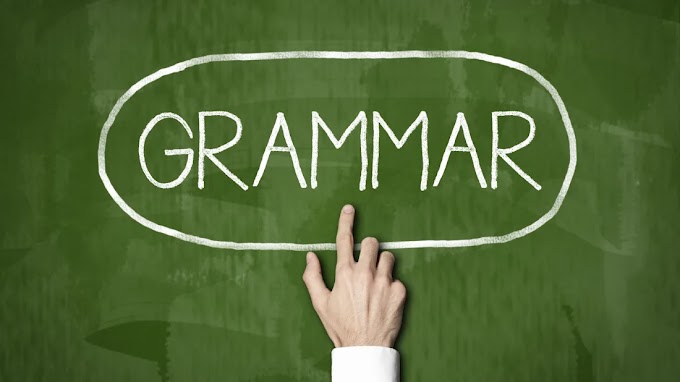Nature of language
Every creature strives
to communicate with its own kind. One of the ways in which this need is
fulfilled is by expressing thoughts in the medium of language.
Meaning of Language
Language is a
means of communication
Language is the bridge
between individuals that tells them they are needed, they are not alone.
Language thus gives self-expression and by extension, identity.
Language is a
systematic and conventional means of human communication by way of vocal sounds.
Language
is a system for communicating. Written languages use symbols (that is,
characters)
to build words. The entire set of words is the language's vocabulary. The ways
in which the words can be meaningfully combined is defined by the language's
syntax and grammar. The actual meaning of words and combinations of words is
defined by the language's semantics.
Functions of Language
- · Gives self-expression and identity. It
tells our listeners or readers about ourselves, in particular about regional
origins, social backgrounds, levels of education, occupation, age, sex and
personality.
- · It gives shapes to thoughts and emotions
and communicates these to intended audiences.
- · It is the basic elements with which the
history of the world has been recorded.
- · It is a time capsule that allows us to
view any moment in the past of a literate man.
- · It is a storehouse of information.
- · It helps to express judgement, opinions,
assertions etc. it is used if a statement is true or false.
- · It helps to maintain social rapport
between people to build and maintain relationship.
One of the basic
human urge is to communicate.
A Communication Model
Communication
happens when the decoder receives, decodes and understand the message of the
encoder.
The encoder and the
decoder are called the interlocutors. (Person who take part
in a conversation)
Language is not only
human phenomenon. Animals cry, hoot, bleat, coo, dance and sing to communicate
their message.
Sounds are basic
units of language. But
not sounds in themselves or in a jumble. Sounds have to be meaningful. They
acquire meaning when they organize themselves in an intelligible combinations
and forms as:
Sounds + Forms +
Meaning gives us an intelligible (that can be understood) sensible structure to
understand the world around us. These three components, in fact, represent
the three fundamental dimension of the organizations as well as the three
levels of analysis in language – Phonological, Syntactic and
Semantic.
1. Phonological level –
Sound and their organizations. (sounds put together to form a word)
2. Syntactic level – Forms
and their organizations. (words put together to form phrases)
3. Semantic level –
Meaning as manifested at the phonological and syntactic levels. (phrases put
together to form sentences)
Features of Human Language:
Language as a
system: Language is a system of system.
Language is not a collection of sounds and forms at random but a highly
organized system in which each unit has its place and value. Each sound is
related to other sounds, each word is related to other words to make meaning.
Arbitrariness: Human
Language is an arbitrary phenomenon. There is no natural connection or
relationship between a word and its meaning. The signifier and the signified
are brought together arbitrarily.
Open-ended
System: The sounds, words and sentences in
language may be finite or limited, but the combinations and constructions are
infinite or unlimited. Thus, this creative and productive potential of the
language enables its user to manipulate and make varieties of constructions to
express himself or herself. So human has the ability to say things that never
been said before, including the possibility to express invented things or lies.
Duality of
structure: Human language is organized at two
levels: Sound production and its Meaning. At the level of sound productions or
individual sounds like a, b, c, d, e ….. But none of these individual sounds
have any meaning in themselves. Their meaning comes from the meaningful
combination to produce words. Although our capacity to produce new sounds
(letters) is limited, we frequently coin new words. Hence our capacity to
produce vocabulary (words) is unlimited.
Displacement: Human
language can be used to refer to any dimension of space and time. We can use
language to refer to the past, present and future. It can also be used to refer
to any place, here or elsewhere; in neither case does the language user have to
move from his or her place to refer to any time or place.
Meta-linguistic
system: Human language can be used to talk
about itself. Its features, functions, varieties and levels of sophistications.
Cultural
Transmission: Human Beings may be born with
innate predispositions to acquire language, but they are not born with the
ability to produce utterances in a specific language. Language is not genetically
transmitted. It is culturally transmitted and has to be consciously learned.
(The process thereby language is passed down from generation to generation is
described as cultural transmission)
Language is an
individual and social phenomenon: Language serves
in expressing individual needs and urges; it brings an individual into
relationship with the external world.
Theories of Language Acquisition
Language acquisition is
the process by which we are able to develop and learn a language. This
includes (in general but depends on the specific language) speaking, listening,
writing, and overall communication. Our ability to acquire language is
a uniquely human trait because although bonobos, a species of primate, can
produce vocalizations with meaning, birds can produce song, and whales
have their own version of a language, no species on Earth that we know of
can express neverending infinite ideas (sentences) along with a limited set of
symbols (gestures, words, and sounds). The term language
acquisition often refers to the first-language acquisition which
simply means that it’s the first language learned as an infant (unless the
child learns two or more language at the same time). However, there is also the
term second-language acquisition which refers to the process in both
children and adults when they learn addition languages apart from their native
one. Each of these terms has at least one language acquisition theory behind
them and the big question of “how do we learn a language?”
A Little History behind Language Acquisition Theory
As with most of
history, it all begins with some philosophers in ancient societies who were
interested in how humans were able to develop language. Using “armchair
psychology” (sitting and thinking about the problem), the large conclusion from
these philosophers was that we were able to learn languages as we do due to the
subset of a human’s ability to gain knowledge and learn concepts. Easier said
they found that language was an innate ability that we were born with. Plato
felt that word-meaning mapping was also innate in one way or another.
Grammarians who studied Sanskrit debated over 12 centuries on whether or not a
humans ability to recognize and use the correct meaning of words in Sanskrit
(an ancient Indian language that is over 3,000 years old) was something passed
down by generations and learned from pre-established conventions (for example,
a child learns the word for horse because he hears older speakers talking about
horses) or whether it was innate (“God-given”).
A while later,
philosophers such as John Locke and Thomas Hobbes got in on the language party
and argued that knowledge (and language, in Locke’s case) come from abstracted
sense impressions. What does that mean? They argue that language comes
from a sensory experience.
Behaviorists, people
who believe that everything is acquired through conditioning, argued that
language is learned through operant conditioning- a form of conditioning that
happens through rewards and punishments which makes someone associate between a
particular behavior and its consequence. A child learns that a specific
combination of words or sounds stands for a specific thing/idea through
successfully repeated associations. For example, a child would learn that their
house animal, Whiskers, is a cat while their other house animal, Fido, is a
dog. He would do so because when the child would call Whiskers his dog, his
parents would say that no, Whiskers is a cat, not a dog. The “big
face” for this language acquisition theory is B.F. Skinner and he
went on to publish this theory.
However, Noam
Chomsky, one of the world’s greatest linguists to date strongly
criticised Skinner’s theory. Chomsky argued that kids often ignore their
parents’ corrections and would not likely learn that actual, proper use of the
word or phrase and end up using it incorrectly, by means of Skinner’s
conditioning theory. Chomsky’s language acquisition theory involved a more
mathematical approach to language development based on a syntax (the meaning of
a word) study.
The Behaviourist Theory (the Sociocultural Theory)
The sociocultural
theory, also known as the interactionist approach, takes ideas from
both biology and sociology to interpret our language acquisition. This language
acquisition theory states that children are able to learn language out of a
desire to communicate with their surrounding environment and world. Language
thus is dependent upon and emerges from social interaction. The theory argues
that due to our language developing out of a desire to communicate, our
language is dependent upon whom we hang around and with whom we want to
communicate. Essentially, the theory says that our environment when we grow up
has a heavy influence on how quickly and how well we learn to talk.
For example, an infant who is raised by a single dad will develop the word
“dada” or “baba” before developing “mama”.
Behaviourists believe
that children learn to speak by imitations and parents then reinforce or
correct their speech constantly. They believe that the child is born with an
empty slate and language items ate written on that mental slate as the child
grows and experiences the world which it is experienced.
The Behaviourist Theory
focuses on the use of imitation and practice for language acquisition.
According to this theory babies learn oral language from the humans in their
environment through imitation rewards and practice. Then a baby tries to speak
a word and succeeds parents and other adults in his world often praise him.
This propels the child to try harder to achieve more. Behaviourism is an
approach to language acquisition based on the proposition that behaviour can be
researched scientifically without recourse to inner mental states. It is a form
of materialism denying any independent significance for mind. The behaviourist
theory emerges on the basis of following assumptions.
1.
Language learning is a habit formation resembling the
formation of other habits. That is a language is learned in the way in which
other habits are learned.
2.
Free will is illusory and all behaviour is determined by the
environment either through association or reinforcement.
3.
Human acquire a language as discrete unit of habits independently
trained not as an integrated system
This theory puts
emphasis on three important factors like stimulus, response and reinforcement.
The Rationalistic Theory (the Nativist Theory)
Rationalistic argue learning is a much more complex process. The child is born with all the facilities to learn language. The linguistic ability is in inherited in the mind of the child. All the child does is discover and test.
American linguist Noam
Chomsky proposed a completely different view of language acquisition. His
Rationalist view was a direct challenge to the established Behaviourist
theories of the time rekindling the age-old debate over whether language exists
in the mind before experience or not. This oral language development theory
states that learning is a natural process for human beings. The Rationalist
Theory gives rise to the Language Acquisition Device (LAD which is thought to
be a part of the brain that enables all children to grasp language naturally).
However, the Rationalist Theory fails to explain why children from different
cultures and environments vary in the time taken to develop oral language. The
Rationalist Theory is more widely accepted and understood than the Behaviourist
Theory.
More Detailed Idea:
Being the most
well-known and one of the most scientifically accurate theories yet, the
Nativist Theory suggests that we are born with genes that allow us to learn
language. This language acquisition theory argues that there is a theoretical
device known as the language acquisition device (LAD) that is
somewhere in our brain.
This “device” is in
charge of our learning a language the same way the hypothalamus, for example,
is in charge of regulating our body temperature. The language acquisition
theory also suggests that there is a universal grammar (a theory by
Noam Chomsky) that is shared across every language in the world because universal
grammar is part of our genetic makeup. Essentially, almost all
languages around the world all have nouns and verbs and similar ways to
structure thoughts. All languages have a finite amount of rules that apply to
all languages from which we can build an infinite amount of phrases. The core
and basic ideas from these finite rules are built into our brains (according to
Universal Grammar and the Nativist Theory).
This language
acquisition theory explains well how humans seem to have a far more complicated
and complex set of communication patterns than any other species in the world.
It also is a working theory for how children are able to learn so quickly
complicated ideas. This language acquisition theory is comparable to how we
think of numbers- everyone in the world knows what 4 apples look like
regardless if we say that there are four, cuatro, vier, or dört apples.
The theoretical
assumptions underlying the Rationalist theory is as follows:
1.
Every human child possesses innate knowledge of language structure
which called language Acquisition Device or LAD.
2.
Language learning is distinct from other cognitive capacities.
3.
Young children learn and apply grammatical rules and vocabulary as
they are exposed to them and do not require initial formal teaching.
Similarities between Behaviourist Theory and Rationalist Theory
Both are the theory of
language learning.
Both of these theories
help to describe some aspects of first language acquisition.
Neither the
Behaviourist nor the Rationalist theories are able to adequately encompass the
complexity of language acquisition.
Both of them are some
way logical in some aspect of acquiring first language.
Both of them are not
totally independent one has been corrected by the other.
Both of them have
emphasis on a specific part of language learning process but none of them is
completely wholly appropriate for first language learning.
Differences between Theory and Rationalist Theory
Behaviourist Theory
|
Rationalist Theory
|
According to
behaviourism language is learnt in the way other habits are learnt.
|
According to
rationalism language develops in the same way as other biological functions.
|
Through behaviourist
theory language acquisition is a stimulus response process.
|
Language acquisition
is a congenital process.
|
In behaviourism
knowledge is seen as constant.
|
In rationalism
knowledge is seen dynamic.
|
In behaviourism
learning is said to be successful when the child can repeat what was taught.
|
In rationalism
learning is said to be successful when the child can generate innumerable
grammatically correct sentences and rejects ungrammatical ones.
|
The behaviourist view
holds that children need formal teaching and guidance to learn in a correct
way.
|
The Rationalist view
maintains that children do not require primary formal instruction.
|
It ignores the
creativity of human beings.
|
It views language
acquisition as a creative process.
|
The behaviourist
theory is mechanical.
|
The Rationalist
theory is not mechanical since it does consider the child as an inert
recipient.
|
The behaviourist
theory cannot explain how the child precedes in his/her journey of language
acquisition.
|
The Rationalist
theory gives some rational explanations about children’s language acquisition
procedure.
|
Language acquisition
is the result of nurture.
|
Language acquisition
is the result of nature.
|
The behaviourists
experiment upon animals not human beings.
|
The Rationalist
experiment on human child not animals.
|










3 Comments
Nice job sir
ReplyDeleteThank you.
ReplyDeleteThis was useful and you explicated everything perfectly well. God bless you!
it very helpful to students...thank you
ReplyDelete